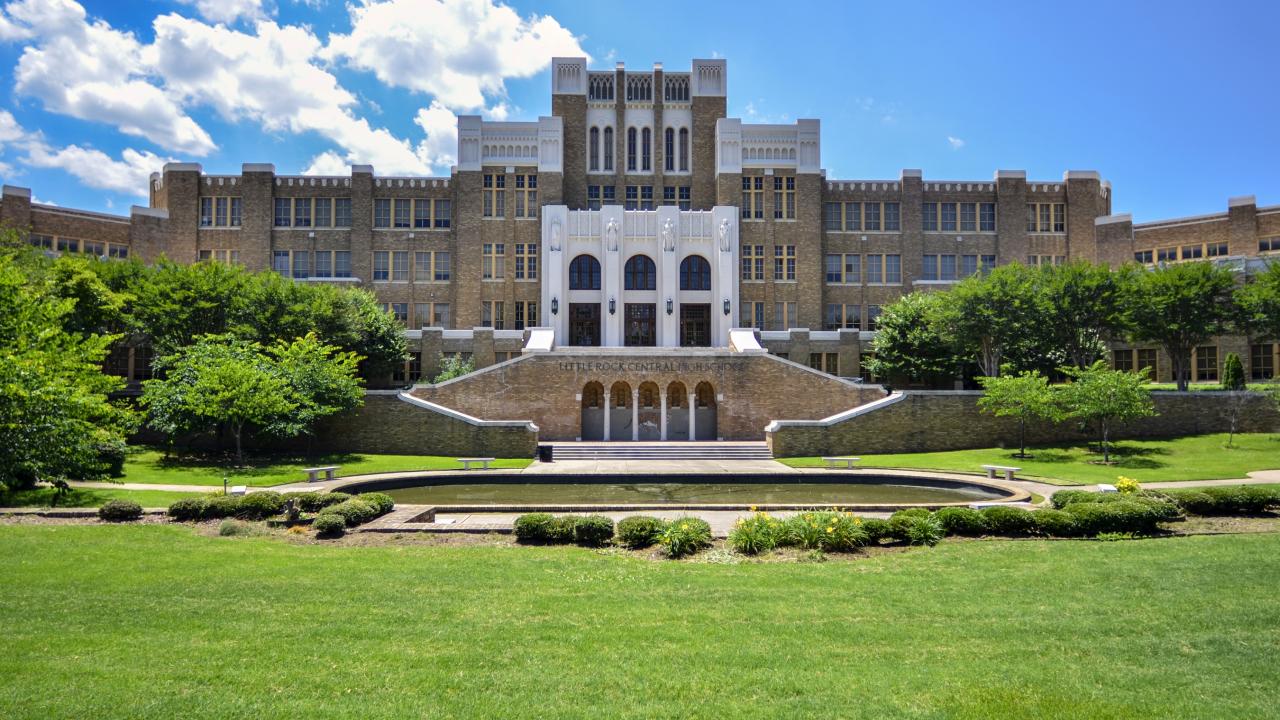Learn far-reaching history at the National Historic Landmarks of Arkansas
National Historic Landmarks highlight the heritage and culture of our country. Currently there are 17 properties across Arkansas that have this esteemed designation of national significance.
Little Rock Central High School National Historic Site is a major U.S. civil rights landmark that is also a National Historic Landmark. This site further stands out as it is still a working school and is the only operating high school in the nation to be designated a National Historic Site. Arkansas’s first African-American students, known as “the Little Rock Nine,” were admitted here in 1957 following a confrontation between Governor Orval Faubus, who used the state's National Guard to block desegregation, and President Eisenhower, who sent federal troops to enforce it.

Another National Historic Landmark that connects with this history is the Daisy Bates House. Daisy Bates was a civil rights activist and a mentor to the Little Rock Nine during the 1957 Little Rock Central High School desegregation crisis.
Also in Little Rock is the Old State House. This building stands out as the oldest standing state capitol building west of the Mississippi River. It served as the state capitol until 1911 and was placed on the National Register of Historic Places in 1969 and was declared a National Historic landmark in 1997. The building is now home to the Old State House Museum, which is located at 300 W. Markham and tells the story of Arkansas history from statehood to the present.
The Joseph Taylor Robinson House is also in Little Rock. This site is also sometimes called the Foster-Robinson House. The Joseph Taylor Robinson House was designed by architect Frank W. Gibb, a well-known architect who also designed the Buckstaff Bathhouse on Bathhouse Row in Hot Springs. This house was built in 1904 by Henry Howard Foster, a lumber merchant and was owned by Robinson beginning in 1930. Robinson was Senate majority leader during President Franklin Roosevelt's first term and this was his home in Arkansas from 1930 to 1937, which falls in the timeline of his prime national influence. Roosevelt himself visited this home in 1936.
Across the river, the Arkansas Inland Maritime Museum in North Little Rock is the only spot in the world where you can see two floating Naval vessels that bookend World War II. One these vessels includes the USS Hoga, one of only two known surviving yard craft that was present at the Pearl Harbor attack in 1941, which led to the country’s entry into World War II. The tugboat has been designated a National Historic Landmark.
In Hot Springs, Bathhouse Row in Hot Springs National Park is also a National Historic Landmark. There are eight bathhouses on this row and they were built between the late 1890s and early 1920s.
The Camden Expedition Sites, which spotlights Civil War history, are also a National Historic Landmark. Many state parks in Arkansas also have connections to the program. The Louisiana Purchase Historic State Park and Natural Area near Brinkley has a monument that marks the “initial point” of the original survey of lands added to the U.S. as a result of the Louisiana Purchase. The monument was listed on the National Register of Historic Places in 1972 and in 1993 the National Park Service designated this point a National Historic Landmark.
Parkin Archeological State Park is a National Historic Landmark that preserves a 17-acre Mississippian Period American Indian village.
Hampson Archological Museum State Park has artifacts from the Nodena Site in Mississippi County, which is a National Historic Landmark.
Plum Bayou Mounds Archeological State Park, formerly Toltec Mounds Archeological State Park, is a National Historic Landmark where you can learn about Native American culture and the largest prehistoric mound complex in the state.
Other sites across Arkansas that are part of the National Historic Landmarks program include the Centennial Baptist Church in Helena-West Helena, the Eaker Site is Mississippi County, the Rohwer Relocation Center Memorial Cemetery in Desha County, and the Fort Smith National Historic Site in Fort Smith. The Menard-Hodges Site is also protected as part of the Osotouy Unit of the Arkansas Post National Memorial, which is also a National Historic Landmark.
